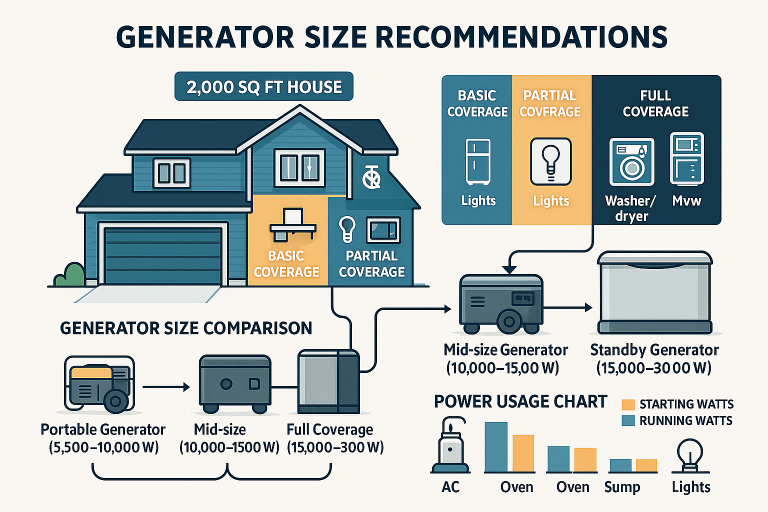What is the typical fuel tank capacity of a portable generator?
As a portable generator owner or someone considering purchasing one, you may be wondering what the typical fuel tank capacity of a portable generator is. In this article, I’ll go over the different factors that determine the fuel tank capacity of a portable generator, as well as provide some examples of different fuel tank capacities that you may come across.
Understanding generator size and capacity
The fuel tank capacity of a portable generator can vary greatly depending on the size and power output of the generator. In general, smaller portable generators will have smaller fuel tanks, while larger portable generators will have larger fuel tanks. This makes sense, as a larger generator will need more fuel to run for longer periods of time, while a smaller generator will not require as much fuel.
Factors that affect fuel tank capacity
There are several factors that can affect the fuel tank capacity of a portable generator, including the size and power output of the generator, the type of fuel it uses, and the intended use of the generator.
Size and power output
As mentioned earlier, the size and power output of a portable generator are the biggest factors that determine its fuel tank capacity. A larger generator with a higher power output will need a larger fuel tank to run for longer periods of time.
Type of fuel
The type of fuel a generator uses can also affect its fuel tank capacity. For example, a generator that runs on propane will typically have a smaller fuel tank than a generator that runs on gasoline, as propane is a more energy-dense fuel.
Intended use
The intended use of the generator can also affect its fuel tank capacity. For example, a generator that is intended for use at a construction site will likely have a larger fuel tank than a generator that is intended for use as a backup power source at a home.
Examples of fuel tank capacities
To give you an idea of the range of fuel tank capacities that you may come across when looking at portable generators, here are a few examples of different fuel tank capacities:
- A small portable generator with a power output of 1,000 watts may have a fuel tank capacity of just 1 gallon.
- A medium-sized portable generator with a power output of 5,000 watts may have a fuel tank capacity of 4 gallons.
- A large portable generator with a power output of 10,000 watts may have a fuel tank capacity of 8 gallons.
It’s important to note that these are just examples and the actual fuel tank capacity of a generator can vary depending on the specific model and manufacturer.
Additional Tank Capacity
it is possible to use additional tanks with a portable generator. This can be a useful option for those who need to run their generator for long periods of time and don’t want to have to constantly refill the fuel tank.
There are a few different ways to use additional tanks with a portable generator, such as:
- Adding a larger fuel tank to the generator itself: Some portable generators come with the option to add an additional fuel tank to the generator. This is typically done by attaching the additional tank to the side of the generator, increasing the overall fuel capacity.
- Connecting multiple fuel tanks: Some portable generators come with the option to connect multiple fuel tanks to the generator. This can be done by connecting the tanks in series so that as one tank runs out, the generator automatically switches to the next tank.
- Using a fuel transfer pump: A fuel transfer pump can be used to transfer fuel from an additional tank to the generator’s fuel tank. This can be a useful option for those who want to use a larger fuel tank than what the generator can accommodate.
- Using a Fuel Tank Extension Hose: Some generators come with a fuel tank extension hose which allows users to connect external fuel sources like large fuel cans or drums to the generator.
It’s important to keep in mind that using additional tanks can add complexity to the generator set up and may require additional equipment or modification to the generator. It’s also important to check the generator’s manual or consult with the manufacturer before attempting to connect additional tanks, as doing so may void the warranty.
Conclusion
The fuel tank capacity of a portable generator can vary greatly depending on the size and power output of the generator, the type of fuel it uses, and the intended use of the generator. As a general rule, larger generators with higher power outputs will have larger fuel tanks, while smaller generators will have smaller fuel tanks. When looking at portable generators, be sure to check the fuel tank capacity to ensure that it meets your needs.


